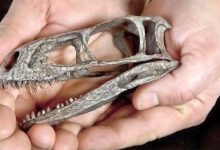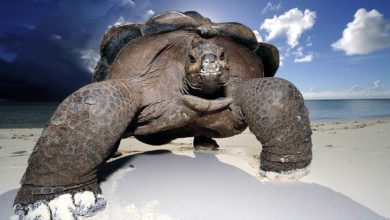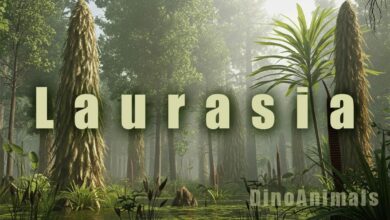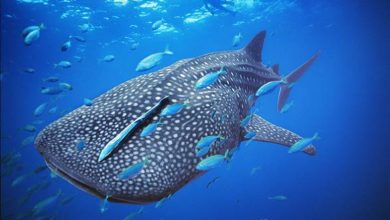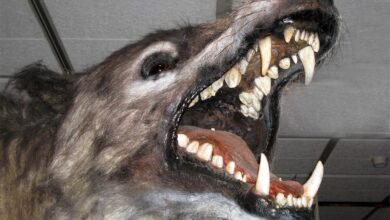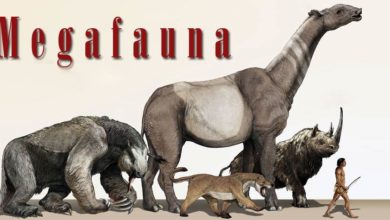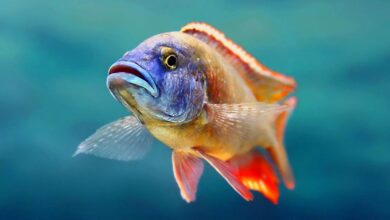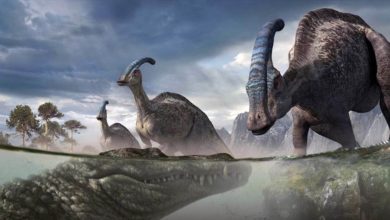Huge dinosaurs you’ve never heard of
Unknown theropods
Over the years, tens or hundreds of thousands of dinosaurs have been found. Today we have descriptions of more than 1,000 species of dinosaurs (see: Complete dinosaur database) and each year more and more of them. We live in a golden age of discovery. Still, hardly anyone realizes that in fact only a fraction of dug-out bones have been described, named and classified. Thousands of them are in museums or other places and are lying without being described. In this article, we want to give you a list of huge theropods that you probably never heard of.
„Alamotyrannus brinkmani” =”Tyrannosaurus brinkmani”?
This theropod was to be described by Dalman in 2013, although the work did not appear, and in 2015 Dalman himself reportedly said that it will not be published until more fossil material is found. In fact, the problem with this theropod is that it is not known at all what material belongs to this taxon.
On the Internet you can often find information that there are 3 fragmentary skulls marked UMNH 11000 (Utah – North Horn formation), TMM 41436-1 described as Tyrannosaurus “vannus” (Texas – Javelin formation) and the largest of them NMMNH P-1013- 1 (New Mexico – McRae formation), which could measure as much as 156 cm in length, so even more than in Sue! This may indicate sizes in the area of up to 12.5 m!
Interestingly, all these individuals have been described in the scientific literature in the past and classified as Tyrannosaurus rex or possibly Tyrannosaurus sp. In addition, all these formations are dated to late Maastrichtian and thus overlap with the occurrence of tyrannosaur.
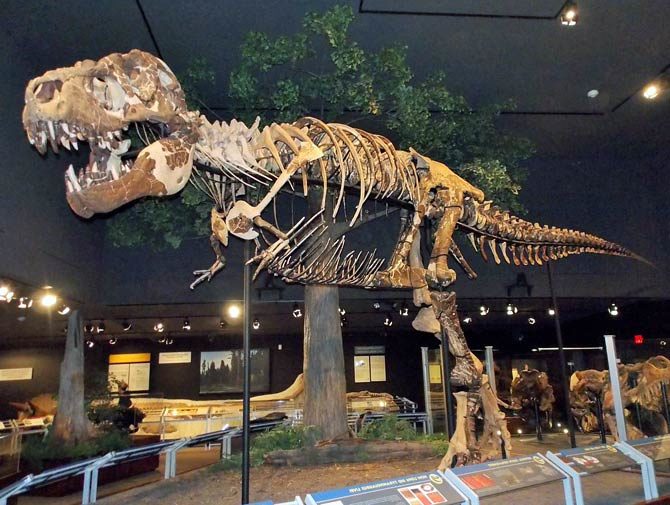
Mortimer on his blog gives different fossil material as “Alamotyrannus” and, despite everything, it is probably much more reliable information than various entries that can be found on the Internet. Mortimer as a material gives a lot of different teeth, femoral bone SMP VP-1113 (about 1 m in length), and mentions dorsal vertebrae described by Gilmore in 1919 and based on these, he estimates the size of this theropod as much as 12 meters. We do not know how, because in the work from 1919, the only mention of size is “very large” so it basically does not mean anything to estimate the size, but it’s possible that Mortimer knows something more or some other work these vertebrae were described in detail (which is very likely).
Anyway, all the fossil material that Mortimer counts as “Alamotyrannus brinkmani” comes from the early maastrichtian of the Ojo Alamo (part of the Naashoibito Member) and is, therefore, older than the tyrannosaur. Some see here an evolutionary ancestor for the tyrannosaur. In any case, the “Alamotyrannus” had, according to unofficial data, a massive body like that of a tyrannosaur, so it could be the second largest theropod (possibly giving up only Tyrannosaurus rex). There is also no shortage of opinion that “Alamotyrannus” should be classified as a Tyrannosaurus species – Tyrannosaurus brinkmani.
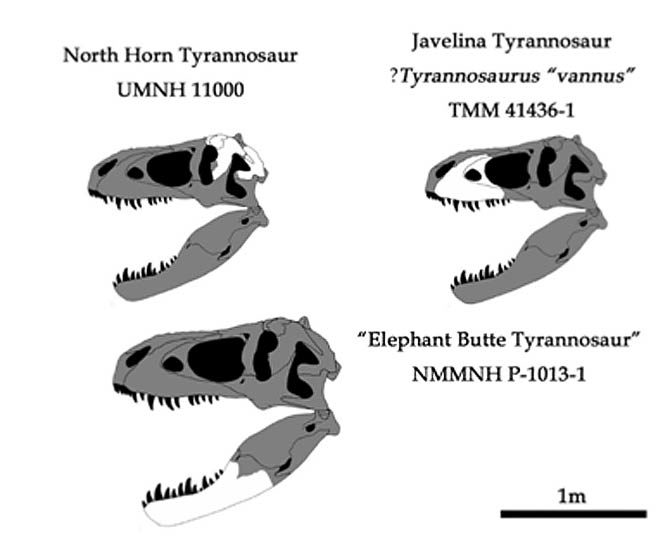
Prodeinodon mongoliensis
The theropod unknown to a rather wide group, coming from the Oshih formation from Mongolia. It was described in 1924 by Osborn only on the basis of a tooth. However, in 1953, Bohlin described very large bones of hind limbs that belong to this species. These were incomplete bones – tibia and fibula with a length of about 1 meter. The material is probably currently lost or damaged, but the theropod with such limbs probably measured at least 10 m in length.
King of the Abelisaurs
In 2006, the remains of a huge representative of Abelisauridae were found in Kenya. The theropod from the Maastrichtian reached, according to estimates, 11-12 meters in length, so much more than the rest of the representative of this clade. The fossil material is quite rich and probably comes from at least a few individuals, so the description probably will provide a lot of interesting information on this topic.
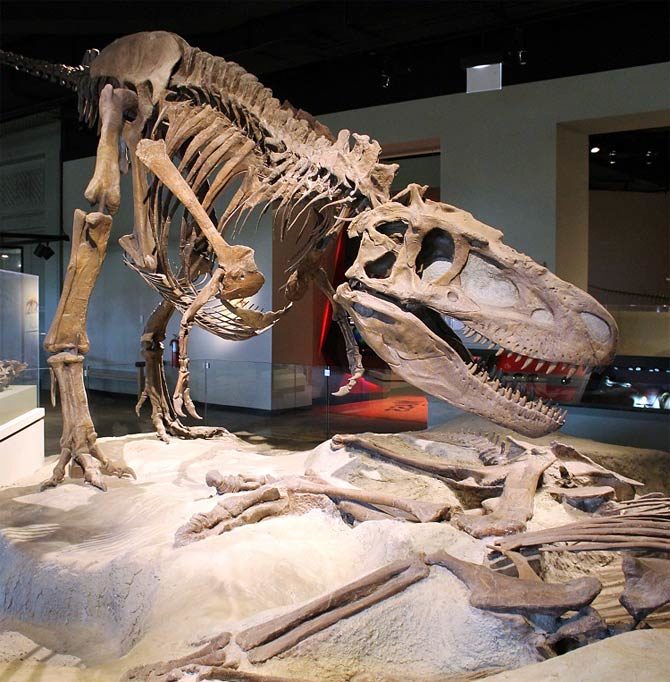
“Megalosaurus” ingens
In 1920, Werner Janensch described the theropod only on the basis of teeth. The remains come from the Tendaguru formation from Tanzania. Due to the fossil material, the theropod has already been classified to various sites. Perhaps it is a member of Megalosauridae or Carcharodontosauridae. In 2011, Galton and Molnar mentioned that the teeth are similar in size to Tyrannosaurus rex, which means that this may have reached gigantic proportions, in addition, as we know the Tendaguru formation is Jurassic, so perhaps in this period there were gigantic theropods. The same formation also includes the famous Giraffatitan brancai, a sauropod that could reach a mass of over 40 tons, so it may have fought with this theropod.
“Osteoporosia gigantea”
It is a fragment of the dorsal vertebra of the theropod originating from the Kem Kem formation from Morocco. Singer classified him as the member of Carnosauria, and compared the sizes with Aerosteon, based on which he determined that the discussed theropod had to measure at least 15 meters in length !!! However, what is interesting, Franoys and his friend, when they compared the dimensions of the vertebra, obtained for this theropod “only” a maximum of 9 meters in length. Mortimer thinks it’s about a member of Carcharodontosauridae.
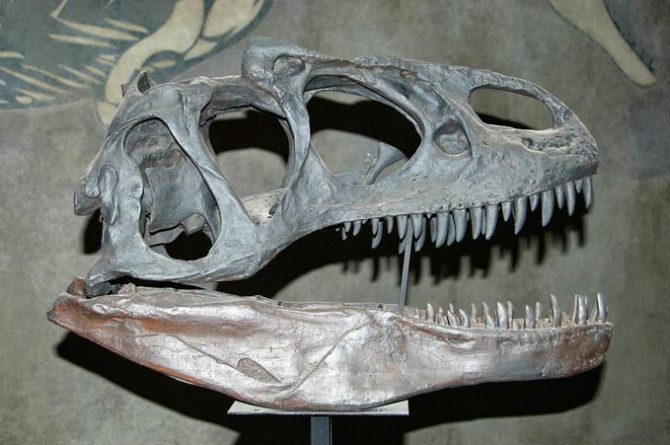
Tajikistan Theropod
Mortimer mentions Tajikistan’s teeth from the Yalovach (early Santonian) formation, which Nessov described in 1995 as belonging to a 10-11 meter carnosaurian theropod.
Kelmayisaurus “gigantus”
Finally a real hit. Well, in 1993 in a popular science book, Grady mentioned the huge theropod, which he named Kelmayisaurus gigantus, according to him the backbone of this theropod was 22 m long! However, no scientific description has ever been made, nor any pictures or drawings. Later, it was reported that the backbone actually existed but belonged to a Sauropod.
There are many other unidentified and indescribable individual theropod bones, suggesting huge sizes. It can also be added that initially Bruhathkayosaurus matleyi was also described as a huge theropod (20 m in length). The material has been lost and has never been tested thoroughly. Only very poor quality photos and drawings remained. Interestingly, when we were able to contact Dr. Kumar Ayyasami in an e-mail in 2017, he said that he wrote his conclusions in a paper in 1989 and continued to consider his find to be a Theropod, so who knows.

Author
The article was prepared by Christopher (Shahen).
Recommended
- Dinosaurs
- Dinosaurs database
- The largest dinosaurs TOP 10
- Predatory dinosaurs
- Dinosaurs from Jurassic World
- Animals & dinosaurs records
- The longest dinosaurs. Sauropods Top 10
- The heaviest dinosaurs – Top 10
- The longest predatory dinosaurs. Theropods Top 10
- The heaviest predatory dinosaurs Top 10
- The longest and largest ornithopods
- The heaviest ornithopods Top 10
- The longest and largest ceratopsians
- The smallest dinosaurs Top 10
- The smallest sauropods Top 10
- The largest pterosaurs Top 10
- The fastest animals – Top 100
- The fastest birds – Top 10



